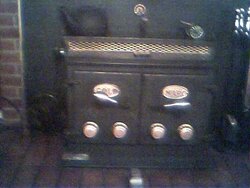I love my old stove as well. And although it smokes some, I don't consider it a "smoke dragon" as I burn it pretty clean.
Dry wood and user operation are key to cleaner burning in the "Classics".
I also noticed that there are more members here this year burning older units. I think these folks can benefit greatly from those who have flattened the learning curve on running a pre EPA stove.
So if you're burning a "Classic" then post up and ask questions, there are more members here burning them than one would think.
Looks like were pulling a few classic burners out of the WOODwork :lol:
notbobvilla said:
I just wanted to say that I have lurked here for a long time and enjoy all the great info here. I read all the horror stories about new stoves that don't heat or are problamatic and it makes me appreciate my " smoke dragon". Every summer I get the urge to replace the stove with with a "purty stove with a viewing hole" and every winter I am so glad I didn't. It works great! In the 20's outside and I added too much wood and I have to open a window because it's almost 90 in here! I have an old, poorly insulated drafty 1700 square house and all I use is the ole "smoke dragon". I know there must be others like me around here, so my question is can we please come up with a better name than "smoke dragon"? Something cool and catchy? Something we can use as a "signature" as i'm getting tired of "jotul" and "PE" signatures everywhere.
No offense meant to anybody in their 65 degree house "watching" not "feeling" the heat! :lol:




 :blank:
:blank: